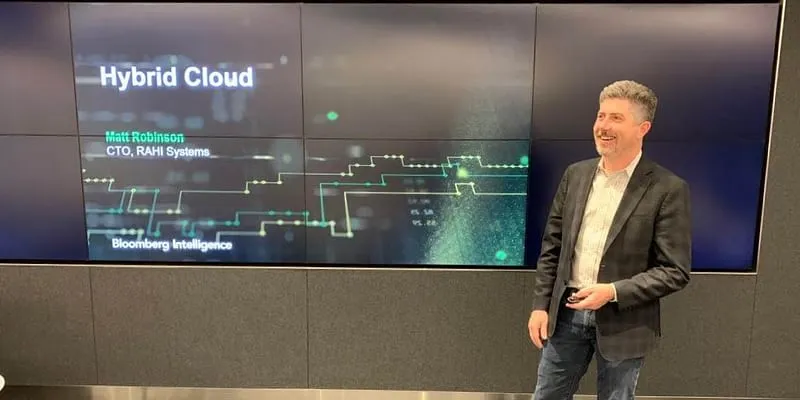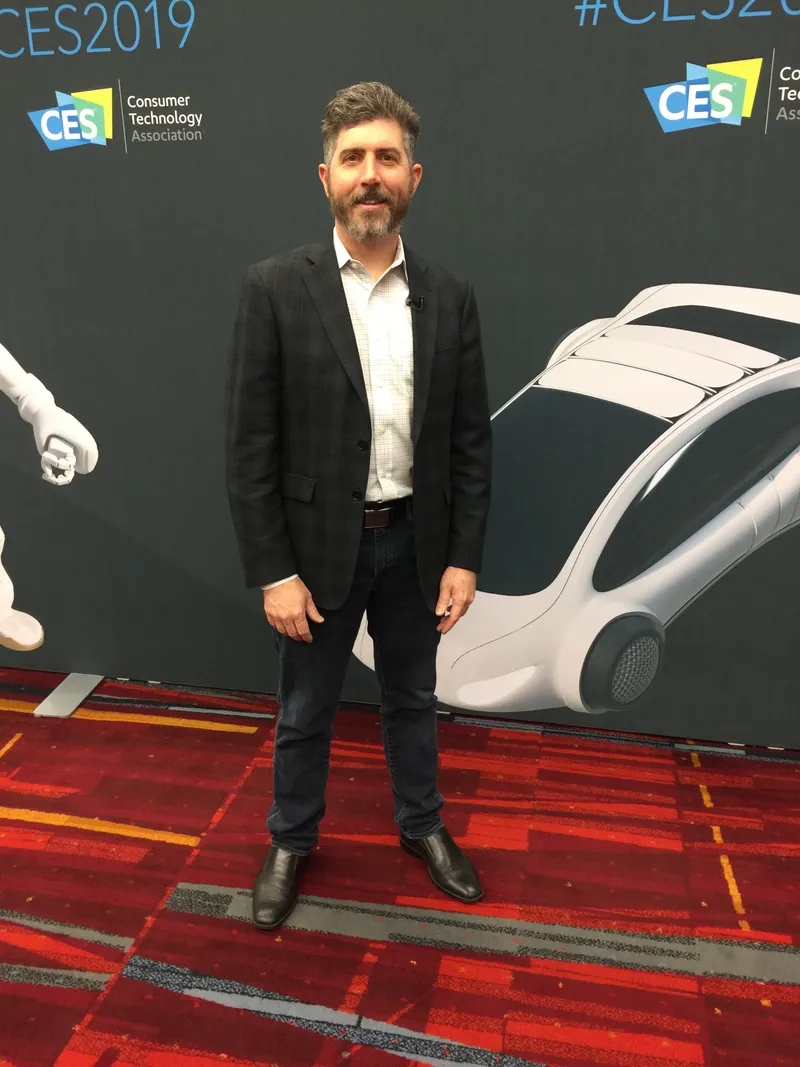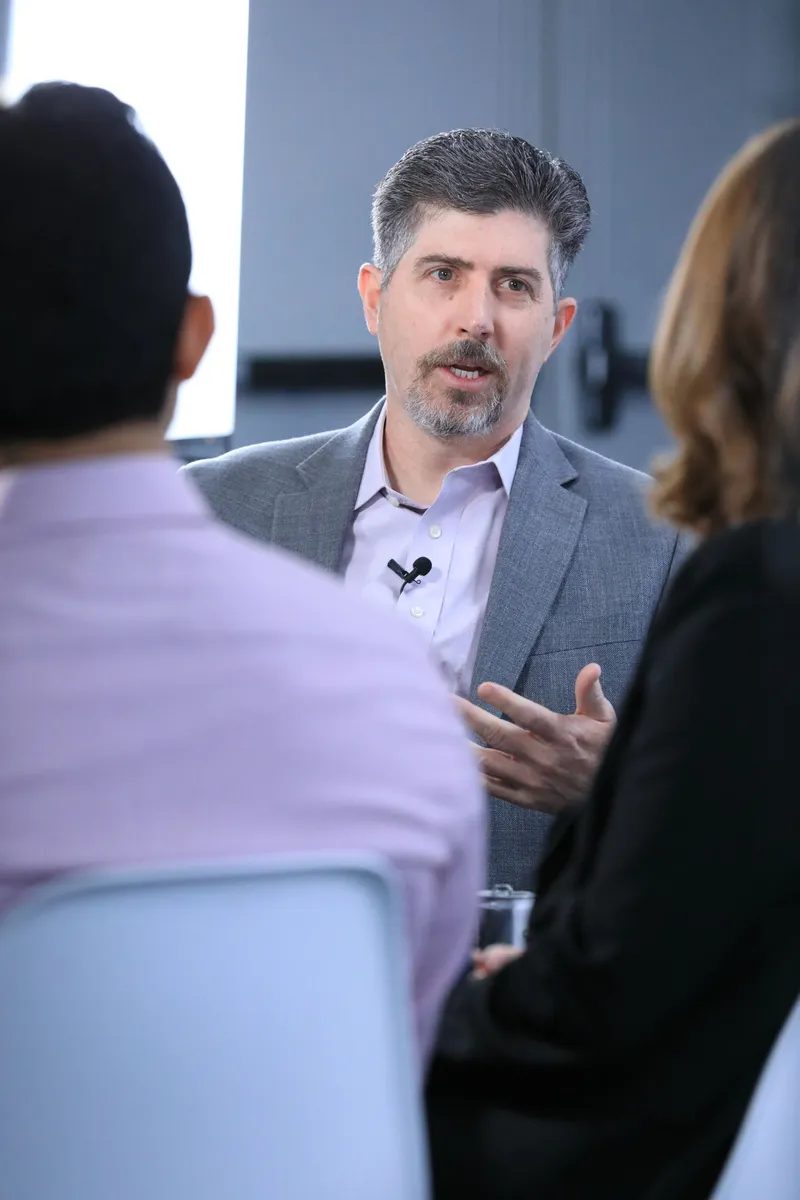[Techie Tuesday] Meet Raahi's Matt Robinson who went from solving server issues at CERN to working on hybrid cloud
In this week’s Techie Tuesday, we feature Matt Robinson, the CTO of Raahi whose journey in technology began in the late 70s.
As the CTO of , a global enterprise solutions company, Matt Robinson is in charge of the organisation’s technological strategic growth. However, Matt’s tryst with technology began in the late 70s, in Florida, where he grew up with trial model three or four of a Radio Shack computer.
“I saw some backend work and assembly of the system, and realised there was a separate language for it. I was very curious to know what it was used for at a time when most people used it for library programmes or to play games during breaks,” recollects Matt in a conversation with YourStory.
Matt was fascinated with how he could play around with the code and it would create something in the foreground, which piqued his interest.
“When we moved from Florida to California, I attended a computer class at school. Initially, they taught typing and basic codes, and I realised that my capabilities in typing exceeded that of most other students. I was clocking close to 100 words per minute at that point,” he says.
It was then that he was switched over to a computer class where he learnt how to do basic programming on the early Apple operating system and Franklin computer.

Early days
Hailing from a diverse background, Matt has lived across the US, and did his schooling from around 16 different schools.
“I had the opportunity to meet a diverse set of individuals from varying backgrounds and cultures, and have different ideas. I left San Diego to study at the University of California Riverside in the early days of the computer industry,” recollects Matt.
After he completed his computer science degree by the end of 1992, he started looking for a job and realised that most companies he was interested in joining were in Silicon Valley.
“So, to be able to apply for some of these companies, I got on my Honda CB 350 motorcycle and drove what was almost a 12-hour journey north to the park outside of UC Berkeley for a job fair," Matt says.
The first hustle
After circulating his resume at UC Berkley, he got a few interviews with Microsoft and Silicon Graphics. He chose Silicon Graphics so that he could leverage his background in Unix as a systems administrator.
“I was interviewed by a support organisation that was the technical assistance centre at the time to come on board as a Unix individual to answer Unix issues that occurred with a Silicon Graphics systems on their Pyrex operating system,” he says.
With a salary of $40,000 a year, Matt moved to the Bay Area to work for Silicon Graphics. After nine months, the team realised that he could do a lot more in terms of coding.
“I built software to improve call centre systems, built better front ends, and did database analysis in an effort to improve customer responsiveness,” adds Matt.
He also learnt a lot in terms of how to work through a variety of different technical challenges. “Silicon Graphics then was set on edge of technology and they built high-performance systems for the government and other large organisations,” adds Matt.
A front seat at CERN and Human Genome Project
Another challenge he faced was debugging Kernel-related issues. They built the LKCD (Linux Kernel Crash Dumps), which he calls as a pivot in his career. Matt was working with a colleague to analyse the memory state for a computer when it has crashed, and go back and figure out its footprint and pass that information through the team.
“Back in the early to mid-90s you didn't really have an Internet to send these massive core dump files from let's say a customer site where the system crashed. So at the time they just put engineers on a plane, and I was one of about five people who were deputed,” Matt says.
Working in the field, Matt had the experience to see how technology was being fixed in a variety of different environments.
“I had the opportunity to fix issues at CERN, and see how the research was conducted there. I even had the opportunity to go to the University of Kyoto, where they were working on the early Human Genome Project,” adds Matt.
He explains they had a Fortran 77 program that they needed some help figuring out, as it was messing up with the genome sequencing.
“I realised that when you go out and help people fix problems, it's not just the technology but how people are using it. You really get to see how technology is applied and how transformative it can be,” he adds.
After working at Silicon Graphics for eight years, Matt wanted to do something different, and joined a small startup called Turbo Linux for six months, during the time of the Dotcom boom and bust.
He joined Alacritech in August 2000, where he worked for five years.

The Alacritech journey
At Alacritech, he developed MRDs (machine-readable dictionary) and PRDs (product requirements document) with the engineering, marketing, and manufacturing teams for several hardware, software, and service products.
He interfaced with clients like IBM and Microsoft for product analysis, and was also responsible for performance analysis of high-end network, storage, and database configurations on Windows and Red Hat Linux platforms.
He also developed benchmark software for TCP/IP network throughput capabilities, including response time efficiencies and CPU utilisation analysis used by customers and internal test groups.
“At Alacritech, I realised that I needed to engage more from a product and management perspective. I realised it wasn’t just about the technology but how it was used and deployed. The company was run by Larry Shay, who’s a fantastic CEO, and I learnt lessons on not just how to bring in new technologies to the market but also how that can eventually grow the business,” says Matt.
However, during the dotcom bust, many companies were trying to rationalise their portfolio and do what they could with the investments.
‘We had built a TCP IP offload adapter, which was pretty transformative at the time. It allowed you to take the network stack workload that you would normally do and move it over to hardware. This led to a significant performance improvement and removed any inhibitors,” Matt says.
He adds they built Scuzzy Drive or the Small Computer System Interface, which is a set of American National Standards Institute (ANSI) standard electronic interfaces that allow personal computer (PCs) to communicate with peripheral hardware such as disk drives, tape drives, and CD-ROM. However, the timing of the product wasn’t right and they had to shelve it.
The NetApp years
In November 2005, Matt left Alacritech and moved to New York. He chose to move into a product management and engineering role, and joined NetApp where he worked for the next 11 years.
“I spent about a year helping the company build its professional services capabilities on the East Coast, consulting on a variety of products on SQL, and helped a financial services companies move entire data systems,” says Matt.
From 2007 to 2008, he worked at a data centre but soon moved to bigger roles across the US.
It was his first opportunity to manage a large group and start learning about the dynamics of not just the technology, but how to best enable the customer experience and deal with customer engagement in case of issues.
"It was a really good first opportunity to help build out an engineering and consultancy team that was really focused on delivering for our customers in and keeping our broader revenue growth potentials in focus as well,” says Matt.
In 2010, Matt decided to move back to California and into an individual contributor role where he helped build enterprise architectures for some of the largest clients of NetApp. All his work allowed him to get more involved in executive briefing centre management sittings with customers.
“I built an application called VIBE (Virtual Infrastructure Backup Engine) which essentially allowed me the opportunity to help back up these virtualisation environments,” says Matt.
This helped customers move their virtual workloads, for which the team also got a few patents.
From 2015 until 2017, he moved into a more service provider space. He says they were building their own cloud that was different from AWS.
Building at and for Google
By early 2017, he decided to move to a company that was partnering with Google.
“It not just about helping grow and support the partner ecosystem with Google, but to also understand the differentiation and delineation between the types of partners who are focused on cloud-type solutions, versus those who have more of the VAR or system integrator relationship which can be more focused on the technology that a customer might buy and use within their own data centres. That bifurcation in the market was an opportunity to learn and grow and develop a set of skills in Google, given that they didn't have anybody in that role at the time, back in April 2017,” Matt says.
This was a chance to build from the ground-up again. He adds they were helping drive more sales for Google Cloud through the lens of what partners would ultimately have.

Building the hybrid cloud
After working with Google and using his learnings at NetApp, Matt realised early on that the future would function on a Hybrid cloud model.
“You really need to have the power to bring both of those capabilities to market; it allows customers to appreciate a partner,” says Matt. It was this understanding that got him to start Raahi.
Today, he helps manage the pre-sales and post-sales services, professional services, as well as engineering and partnerships teams in the organisation across the globe. He is also looking at how Raahi is delivering and sustaining the value with their most strategic customers.
“We are not just ensuring that we can use technology to meet their needs, but are also making sure that we are operationally cost-efficient as well as profitable. One of the lessons I took at Google was around the five traits of effective teams, which I actually deploy here at Raahi,” says Matt.
He focuses on psychological safety, allowing people to be able to have a voice and not worry about any kind of retribution.
“I work towards making sure that everybody's role had meaning and that everybody has an impact in the organisation,” explains Matt.
What does he looks for in techies?
He adds the team will continue to work towards building a hybrid cloud strategy at Raahi.
Speaking of what he looks for in techies, Matt says,
“I want to see how they think and not just what they know. It is important to understand how people think through problems and how they work with others. Do they like to work by themselves or do they like to work for a team? Do they like to take on a couple of very large problems or do they prefer to work on more transactional type work where they’re solving a lot of problems throughout the day? Where does one find their greatest happiness?”
Even today, Matt does a lot of coding and has been working on some cloud assessment work.
“So I encourage people to continually show an interest in learning and making sure that kind of curiosity can lead to greater career success for them,” he adds.
Edited by Kanishk Singh


![[Techie Tuesday] Meet Raahi's Matt Robinson who went
from solving server issues at CERN to working on hybrid cloud](https://images.yourstory.com/cs/2/a9efa9c02dd911e9adc52d913c55075e/FeaturedimageMatt-1642476477773.jpeg?mode=crop&crop=faces&ar=2%3A1&format=auto&w=1920&q=75)
![[Techie Tuesday] From being a part of Windows 95 launch to building the first global BNPL product, meet ZestMoney’s Ashish Anantharaman](https://images.yourstory.com/cs/2/a9efa9c02dd911e9adc52d913c55075e/TTAshishAnantharaman-1641817578030.jpeg?fm=png&auto=format&h=100&w=100&crop=entropy&fit=crop)
![[Techie Tuesday] Meet Rajesh Jain, India’s first website creator who sold his news business to Sify for $115M in the country’s first dotcom acquisition](https://images.yourstory.com/cs/2/f49f80307d7911eaa66f3b309d9a28f5/Featureimages-newdeck11-1641210992600.png?fm=png&auto=format&h=100&w=100&crop=entropy&fit=crop)
![[Techie Tuesday] Tracing computer engineer Siva Kumar Tangudu’s life from the groves and labs of Goa to CTO of fintech startup Slice](https://images.yourstory.com/cs/2/f49f80307d7911eaa66f3b309d9a28f5/Slice-1633355789306.png?fm=png&auto=format&h=100&w=100&crop=entropy&fit=crop)
![[Techie Tuesday] From a backbencher to building a $100M logistics tech company: journey of LogiNext’s Manisha Raisinghani](https://images.yourstory.com/cs/2/77e43870d62911eaa8e9879653a67226/TT-26-1627321840984.png?fm=png&auto=format&h=100&w=100&crop=entropy&fit=crop)
![[Techie Tuesday] From working on oil fields to building an AI startup that was acquired by a Valley unicorn: Deepti Yenireddy’s journey](https://images.yourstory.com/cs/2/a9efa9c02dd911e9adc52d913c55075e/TT-1621247423240.png?fm=png&auto=format&h=100&w=100&crop=entropy&fit=crop)




